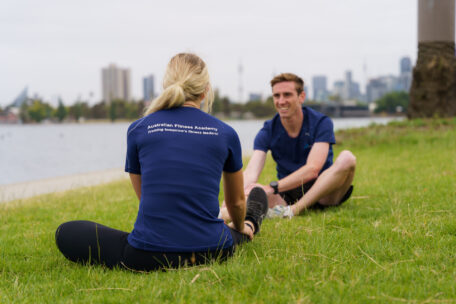Is it really necessary?
Is warming up, cooling down and stretching really necessary? Recent research has shown conflicting responses when it comes to warming up, cooling down, stretching and injury. The jury is still out when it comes to this area of your training, however I believe warming up, cooling down and stretching are an important part of any exercise program. Here are my thoughts on why…
Warming Up
So WHY is a warm up so important?
Warming up increases body temperature and blood flow to muscles, prepares the musculoskeletal system for exercise, reduces the chance of muscle injury, increases the heart rate and respiration rate and improves blood circulation which helps you perform your workout to the best of your ability!
OK, so if this is the case, isn’t a few minutes of static stretching enough?
No! Standalone static stretching before a workout can overextend muscles and essentially decrease the power and strength required from your working muscles when you work out.
It’s extremely important that we increase the blood flow into the muscles to avoid injury. For this reason, dynamic warm-ups before you work out are the best option. Think of it like activating your muscles – by moving around and getting your muscles warm and ready for action, you will keep yourself strong and injury free.
Doing a dynamic warm up can also help activate your central nervous system, preparing your muscles for a great workout that will produce your best effort.
When your body is properly warmed up, your muscles and joints are ready for maximum flexibility, which means you can perform each exercise with CORRECT form that maximises results and minimises risk of injury.
I also believe the warm up is a great tool to mentally prepare for a tough workout, not only getting your body ready, but also your mind!
Warming Up… My quick tips:
- Progress from low intensity exercises to moderate intensity over at least 5-7 minutes, slowly increasing the intensity over that time.
- Include activities involving muscle groups that will be used in the workout.
- Perform movement activities that work on increasing your joint’s range of motion (ROM); this will help to increase your level of flexibility.
Try: Forward/backward arm swings, side-to-side trunk rotations with arms extended outward, walking lunges, forward/backward leg swings, side-to-side leg swings, jogging in place with high knees or butt kicks, wall push-ups.
Cooling Down
Due to time constraints many personal trainers neglect the cool down at the end of a PT session.
So WHY Cool Down?
After vigorous exercise the body needs time to slow down, making the cool down an important step in aiding recovery both mentally and physically.
Cooling down helps reduce waste products (lactic acid), reduces muscle and joint stiffness and improves your recovery time between workouts.
If you do not get the time to cool down with your clients, encourage them to do so after your session.
Cooling Down… My Quick Tips:
- 3-5 minutes of light jogging on the treadmill or stationery bike riding, on an easy load decreasing as you go.
- Some other form of light activity, slow lap swimming or an easy jog. Use RPE of around 3-5 as a guide.
- 5-10 minutes of static stretches, making sure you emphasise the muscle groups that you have used in your workout.
Stretching
Finally, WHY stretch?
The main purpose of stretching is to increase flexibility and maintain the muscle balance in your body, remember that muscles work in pairs so you need to stretch both the agonist as well as the antagonist (eg. biceps v triceps).
Without stretching, muscles will gradually lose their flexibility, leading to a greater risk of tearing when you place them under load.
Stretching can reduce tension by helping to relax the body, promote circulation and can also help with coordination by increasing your joint’s ROM.
Stretching… My Quick Tips:
Only stretch to a feeling of tension (never feel pain when stretching). When doing static stretches do them slowly and gently. Don’t hold your breath whilst stretching. Hold each stretch for at least 15-20 seconds and shake out the limbs between stretches.
If you feel pain or extreme tightness while stretching, STOP the stretch!
There you have it! The reasons why I always start off a work out with a warm up and finish it off with a cool down and stretches.
What are your thoughts on warming up, cooling down and stretching? Do you incorporate this into your own workouts? Or do you skip this and focus on your main training session? Join the conversation by ‘liking’ AFA on Facebook
Written by David Griffiths, AFA Student Support Officer







